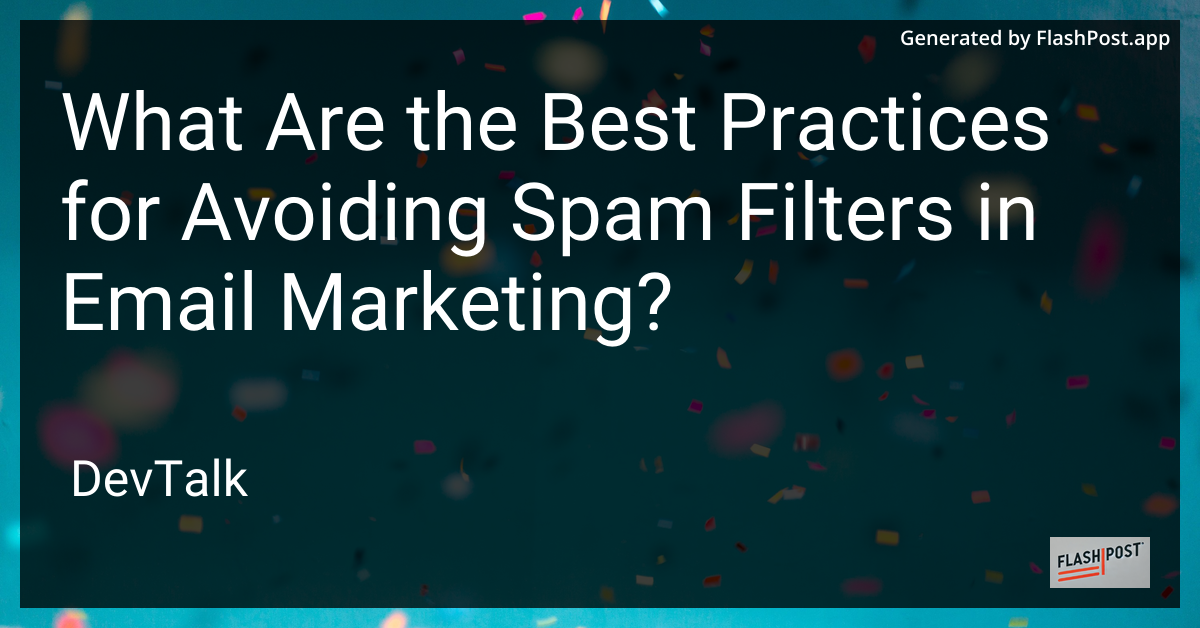What Are the Best Practices for Avoiding Spam Filters in Email Marketing?

What Are the Best Practices for Avoiding Spam Filters in Email Marketing?
Email marketing continues to be a vital channel for businesses to reach their audience.
However, the prevalence of spam filters can pose a challenge, requiring marketers to employ best practices to ensure their emails reach inboxes effectively. Here’s a guide to the best practices for avoiding spam filters in email marketing.
1. Use a Recognizable Sender Name and Email Address
Creating a sense of trust starts with your sender name and email address. Make sure these elements are recognizable to the recipient. Avoid using generic email addresses, such as noreply@example.com, and instead, use a human-friendly name that aligns with your brand.
2. Craft Relevant and Engaging Subject Lines
Subject lines are crucial for capturing attention. Keep them relevant, clear, and free from spammy words like "Free," "Buy Now," or "Urgent." Use personalization to connect with the recipient—tailoring your message can significantly improve open rates and reduce spam flagging.
3. Maintain a Clean Email List
Email lists should be regularly updated to remove inactive or invalid addresses. Employ double opt-in processes to ensure your subscribers truly want to receive your emails. This not only keeps your list healthy but also protects it from spambots.
4. Optimize Your Email Content
Ensure your email content is relevant, valuable, and engaging. Use a balanced mix of text and images, and pay attention to the ratio of image to text. Emails that are too image-heavy can be flagged as spam. Additionally, avoid excessive use of links and attachments.
5. Authenticate Your Email
Authenticate your emails using standards like SPF, DKIM, and DMARC. These protocols help verify your legitimacy as a sender and can significantly improve your deliverability rate by signaling to spam filters that your emails are legitimate.
6. Provide an Easy Unsubscribe Option
Include a clear and simple unsubscribe link in your emails. Making it easy for users to opt-out reduces spam complaints and demonstrates respect for privacy, which email providers consider when evaluating your messages.
7. Test Your Emails
Before sending out a campaign, test your emails across multiple platforms and devices. Use tools that replicate spam filter checks to identify potential issues that might be causing your emails to get flagged.
Conclusion
Avoiding spam filters is crucial to the success of your email marketing efforts. By using authentic sender details, engaging content, and following email authentication standards, you can ensure your campaigns reach your audience effectively.
For those interested in technical implementation, consider exploring resources on how to send emails effectively, such as Laravel email sending, how to send an email with Laravel, and managing email queues in Laravel here. Additionally, you can learn about sending emails using the Sendmail command in Linux here and more on Laravel email sending here.
By implementing these best practices, you can minimize the chances of your emails landing in spam folders and maximize your email marketing efforts.
This article is designed to provide actionable advice while integrating relevant resources for further exploration, particularly for those leveraging Laravel for their emailing needs.